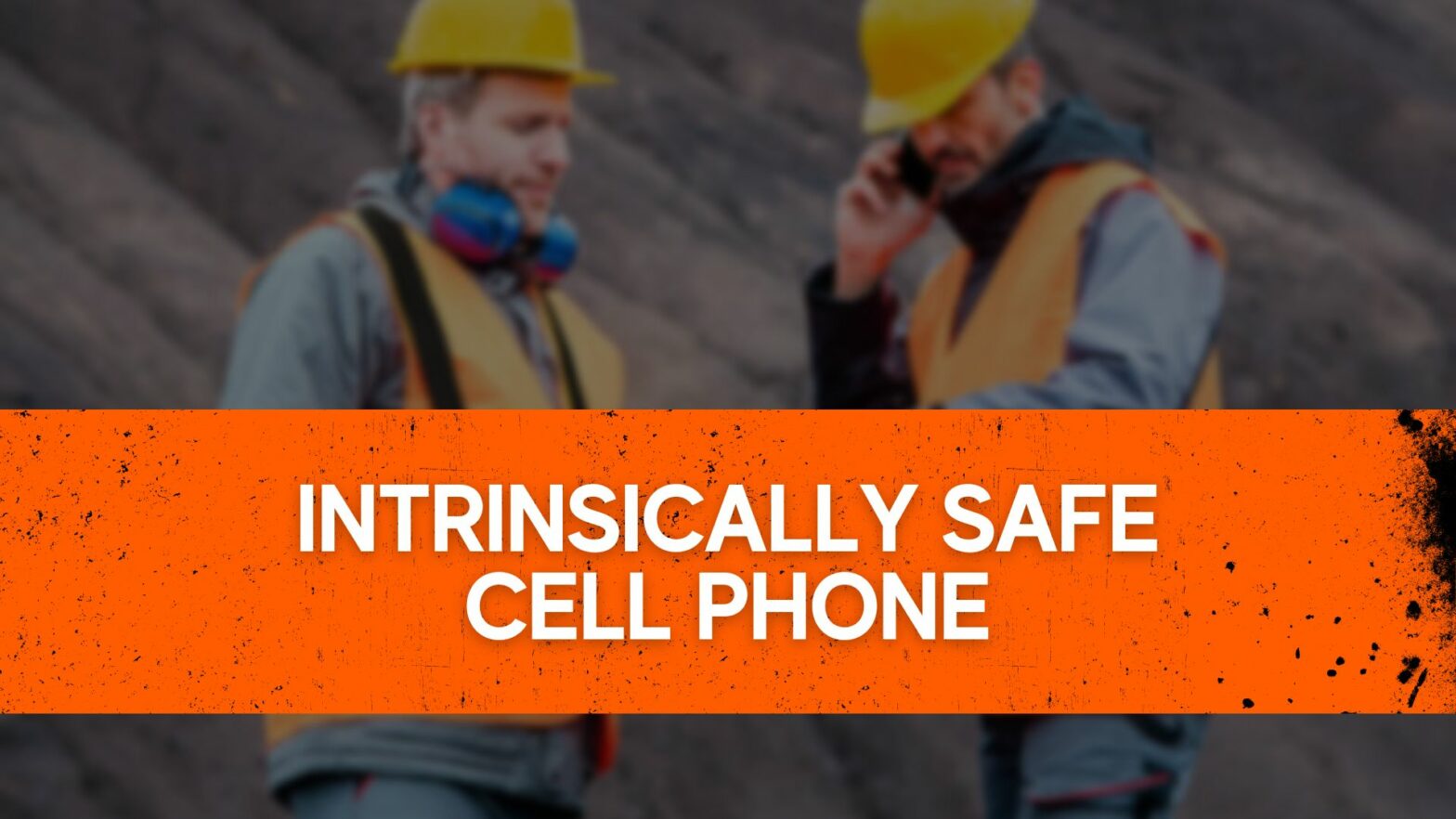If you work in a hazardous area where explosions are likely, then minimizing the chance of an explosion becomes your highest priority. The design of Intrinsically safe devices is to prevent an explosion. In this blog post, we’ll take a look at intrinsically safe cell phones and how they ensure safety in areas where the chances of an explosion are high.
What is an Intrinsically Safe Cell Phone?
Like all intrinsically safe devices, intrinsically safe cell phones ensure that the phone cannot produce a spark or generate enough heat to ignite any potentially combustible materials in your workplace. Its design is for use in facilities where explosive material is likely to be present at least some of the time. Since these environments are very volatile, even common everyday items could serve as an ignition source.
Intrinsically safe cell phones are certified to match the environment that you will be working in, so you can rest easy knowing that the device has been tested and meets rigid and thorough standards of safety.
What ratings are there?
A variety of different organizations provide ratings for intrinsically safe devices. A popular certification is the European Union’s ATEX directive. This directive defines different zones of explosive hazard. The division of these zones is vapor, gas, or mist versus materials that are airborne dust. For the former category, the zones are:
- Zone 0 – A place where the explosive material is frequently or constantly present.
- Zone 1 – A place where the presence of explosive material is likely in normal operation.
- Zone 2 – A place where exposure to explosive material is likely to occur but will do so for only short periods of time.
The ATEX ratings for airborne dust-based explosives are the same, except they are numbered from 20 to 22. Outside of the European Union, similar IECEx standards are common and use the same zone numbers.
You may also see devices rated in the North American class and division system. Under that system, Class I represents vapor, gas, or mist-based explosives and Class II is for airborne dust-based explosives. Division 1 is the same as Zones 0 and 1 from the ATEX and IECEx systems. Division 2 is the same as Zone 2.
What is the difference between Intrinsically Safe and Explosion Proof?
Unlike intrinsically safe phones, explosion-proof phones do not concern themselves with trying to prevent a spark. Instead, they aim to contain the device within an enclosure that ensures that any internal spark or explosion does not reach outside of the enclosure where it can potentially ignite a hazardous material. The requirement for an explosion-proof container is to withstand whatever internal sparks or explosions that might occur by the device, and, contains it. This makes certain that the outside of the enclosure does not reach a heat level that could ignite any hazardous materials in the room.
It is a common misconception that explosion-proof enclosures protect the device itself from an explosion. This is not the case, or at least it is not their design purpose. Its design is to contain any explosion the device might produce, preventing larger explosions in dangerous regions. Whether or not a larger explosion can get in and damage the device is not a concern.
What is different between an Intrinsically Safe cell phone and a normal phone?
Many people assume that intrinsically safe smartphones will lack the features of other modern smartphones. This is not the case. Manufacturers do not compromise on quality or usability when they are designing devices that will meet the certification criteria that they are designed for.
This doesn’t mean that there are no differences between an intrinsically safe cell phone and a normal phone. The process of making a phone intrinsically safe or explosion-proof does require that it be a bit heavier and bulkier than a standard phone. Intrinsically safe phones are more likely to offer a camera-free option and a touchscreen that is usable while wearing gloves since they are for hazardous sites.
Of course, the biggest difference is that an intrinsically safe phone is certified to ensure that it will never create a spark or generate enough heat to ignite the explosive material in your hazardous workplace.
How does an Intrinsically Safe cell phone work?
Before receiving the certification for intrinsically safe, there are a number of distinct ways for an accident occur. So first, the manufacturer should solve those issues. The most obvious potential for a spark is from static electricity, so the materials for the intrinsically safe phones need to be static-resistant materials. There are deeper internal changes that eliminate spark and heat chances as well.
Another big cause for sparks from an electronic device is a short circuit. This may occur if an electrically conductive substance, like liquid or dust, bridges electrical components that normally won’t do so. For minimizing the chances of a short circuit, the intrinsically safe phone works differently inside.
Batteries are another source of potential sparks. So major is this risk that house fires have resulted from cell phones that have caught fire. This can be prevented with circuitry to prevent overcharging, which many consumer phones have. In addition to that circuitry, an intrinsically safe phone design will ensure the battery from a possible fire accident. They will also have circuitry that monitors for an unusually high discharge of the battery, which can also cause extreme heat or sparks that might ignite a potentially hazardous material.
Conclusion
Intrinsically Safe Store has a wide variety of intrinsically safe cell phones that will keep you safe in your hazardous workplace without reducing your connectivity. These devices provide PDF files of their certification so you can be certain that they meet the requirements of your facility and cater to a range of budgets.
–> View the largest selection of Intrinsically Safe Cell Phones on our website.
If you have any questions please reach out to our Hazardous Area experts anytime.


























